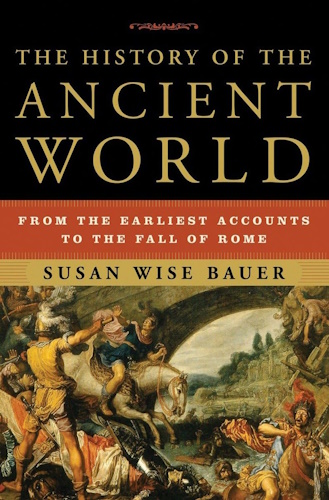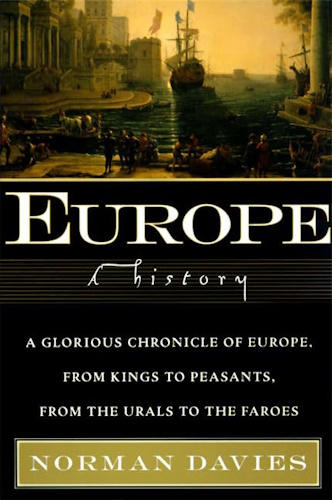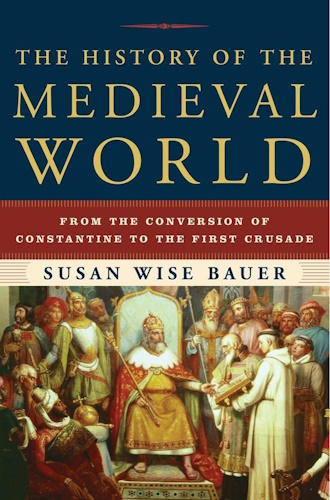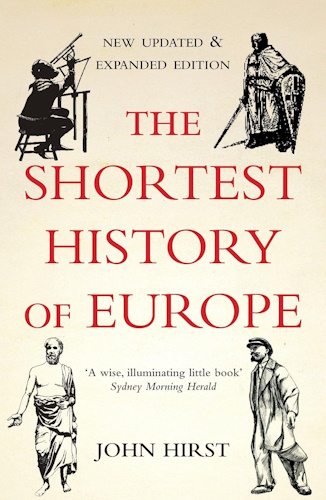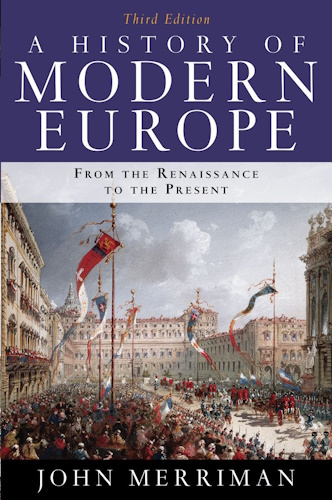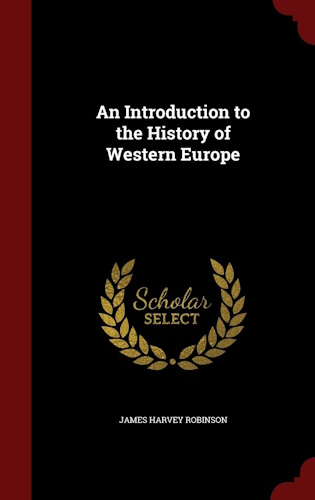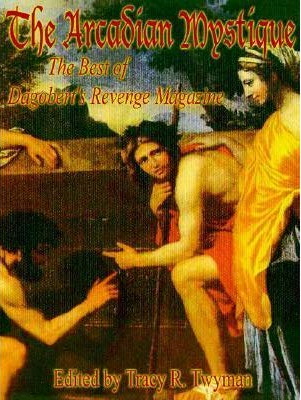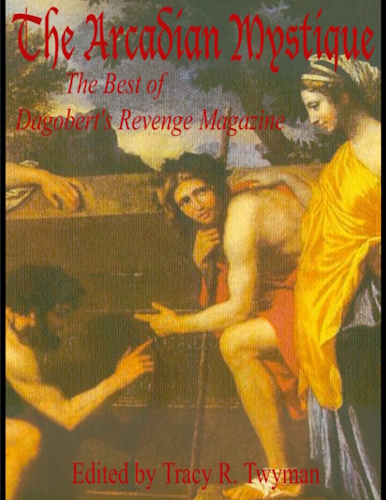![]()
![]()

When the Stewart King James VI of Scotland ascended the throne of England to become King James I of Great Britain, he made a speech that shocked and appalled the nobles sitting in Parliament, who had been waxing increasingly bold over the last few years, attempting to limit the powers of the crown to strengthen their own. What shocked them was that James used his coronation speech to remind them of the ancient, traditional belief that a monarch is chosen by God to be his emissary and representative on Earth, and ought therefore to be responsible to no one but God. In other words, James was asserting what has become known to history as "the Divine Right of Kings," and the nobles didn't like it one bit. Quotes from the speech show how inflammatory his words actually were:
"The state of monarchy is the most supreme thing upon earth, for kings are not only God's lieutenants upon earth, and sit upon God's throne, but even by God himself are called gods… In the Scriptures kings are called gods, and so their power after a certain relation is compared to divine power. Kings are also compared to fathers of families: for a king is truly Parens patriae, the politique father of his people… Kings are justly called gods, for that they exercise a manner of resemblance of divine power upon earth: for if you will consider the attributes to God, you shall see how they agree in the person of a king."
The nobles were aghast. This fat, bloated pustule telling everyone to worship him as a god! It seemed patently ridiculous. Even more offensive, James finished up his speech by putting Parliament in its place, basically telling them that, since he ruled by the grace of God, any act or word spoken in contradiction of him was an act against God himself. James continued:
"I conclude then this point, touching the power of kings with this axiom of divinity, That as to dispute what God may do is blasphemy… so is it sedition in subjects to dispute what a king may do in the height of his power. I would not have you meddle with such ancient rights of mine as I have received from my predecessors… All novelties are dangerous as well in a politic as in a natural body, and therefore I would loath to be quarreled in my ancient rights and possessions, for that were to judge me unworthy of that which my predecessors had and left me."
Although it was James I that made the concept famous, he certainly did not invent the idea of Divine Right. The concept is, as I shall show, as old as civilization itself.
As harsh and dictatorial as it may seem, such a system actually protected the rights of individual citizens from even larger and more powerful bullies such as the Parliament and the Pope. When power rests ultimately in the hands of a single individual, beholden to nobody except God, who need not appease anyone for either money or votes, injustices are more likely to be righted after a direct appeal to the king. Furthermore, past monarchs who held their claims to power doggedly in the face of increasing opposition from the Catholic Church managed, as long as they held their power, to save their subjects from the forced religious indoctrination and social servitude that comes with a Catholic theocracy. Author Stephen Coston wrote in 1972's Sources of English Constitutional History that:
"Without the doctrine of the Divine Right, Roman Catholicism would have dominated history well beyond its current employment in the Dark Ages. Furthermore, Divine Right made it possible for the Protestant Reformation in England to take place, mature and spread to the rest of the world."
The Divine Right practiced by European monarchs was actually based on a more ancient doctrine practiced by the monarchs of Judah and Israel in the Old Testament, whom many European royal families considered to be their ancestors, tracing their royal European lineage back to the Jewish King David, sometimes through the descendants of Jesus Christ. Such as line of descent was (and is) known as the "Grail bloodline." One of Europe's most famous monarchs, Charlemagne the Great, was often called "David" in reference to his famous ancestor, and Habsburg King Otto was called "the son of David."1 In fact, the European tradition of anointing kings comes from that practiced in the Old Testament. Author George Athas describes how the ceremony symbolized the Lord Yahweh adopting the new king as his own son:
"Firstly, the king was the 'Anointed' of Yahweh - the mesiach, from which we derive the term 'Messiah.' At his anointing (or his coronation), the Spirit of Yahweh entered the king, giving him superhuman qualities and allowing him to carry out the dictates of the deity. The psalmist of Psalms 45 describes the king as 'fairer than the sons of men', and continued to praise his majestic characteristics. This king also had eternal life granted to him by Yahweh. The deity is portrayed as saying to him, 'You are my son - today I have sired you.' The king was Yahweh's Firstborn - the bekhor - who was the heir to his father's estate. He was 'the highest of the kings of the earth.' Thus, the king was adopted by Yahweh at his coronation and, as such, was in closer communion with the deity than the rest of the people. On many occasions, Yahweh is called the king's god. The king was distinguished far above the ordinary mortal, rendering him holy and his person sacred. It was regarded as a grievous offence to lay a hand on him. Thus, to overthrow the king was rebellion of the most heinous sort and an affront to the deity who had appointed the king… We can note that the king of Judah and Israel is described in divine terms. He is, for example, seen as sitting at Yahweh's right hand, and his adopted son. We find similar motifs of Pharoahs seated to the right of a deity of Egypt. Psalms 45:7 calls the king an 'elohim' - a god. Psalms 45:7 also says 'Your throne is like God's throne.'"
Here we see the basis for King James' claim that the scriptures likened human kings to gods. As such, kings were strongly associated with the priesthood as well, and in some cases took on priestly functions. However, traditionally, the Jewish priesthood was dominated by the tribe of Levi, which was biologically related but functionally separate from the royal line of David - that is, until Jesus came along, heir to both the kingly and priestly titles through his lineage back to both tribes. However, in other more ancient cultures, such as the Egyptian, the royal and priestly functions were inseparable. In addition to regarding their pharaohs as the literal offspring of deity, and in fact, deities themselves, the Egyptians believed that the institution of kingship itself had been given to them by the gods. Their first king had been one of their main gods, Osiris, whom all human kings were expected to emulate. Richard Cassaro, in his book, A Deeper Truth, elaborates:
"… during the First Time (the Golden Age when the gods ruled directly on Earth) a human yet eternal king named Osiris initiated a monarchial government in Egypt and imparted a wise law and spiritual wisdom to the people. At the end of his ministry, Osiris left his throne to the people. It was, thereafter, the duty of every king to rule over Egypt in the same manner Osiris had ruled."
This concept that kingship began with a single divine ruler who all subsequent human kings are descendants of can be traced back to the oldest civilization acknowledged by history, Sumeria, and the other Mesopotamian cultures that followed, such as the Assyrians and the Babylonians. To quote Henri Frankfort:
"In Mesopotamia, the king was regarded as taking on godhood at his coronation, and at every subsequent New Year festival. However, he was often seen as having been predestined to the divine throne by the gods at his birth, or even at the beginning of time. Through a sacred marriage, he had a metaphysical union with the mother goddess, who filled him with life, fertility, and blessing, which he passed onto his people."
The Encyclopedia Britannica has identified three different types of sacred kingship that were recognized in the ancient world. The king was seen as:
(1) the receptacle of supernatural or divine power,
(2) the divine or semi-divine ruler; and
(3) the agent or mediator of the sacred.
However, this author believes it is safe to say that all of these concepts stem from the almost universal belief that kingship descended from Heaven with a single divine being who was literally thought of as the ancestor of all those who followed. This king, I believe, was known to the ancients as Kronos, the Forgotten Father, and this is another name for the deity/planet, Saturn. He was the "brightest star in the heavens," who fell to Earth and intermarried with the daughters of men to breed a race of human kings (the Grail Bloodline), but was thereafter imprisoned in the underworld by his father, Zeus. Some might think this contradicts the traditional association of ancient kings with the Sun-god, but in fact, Saturn himself was a sun god of a sort. Some believe that in ancient times Saturn was the dominant figure in the night sky, and as such became known as "the midnight sun" (a term later used by occultists to refer to the Grail). From its position in the sky it appeared to stand still, as the rest of the night sky revolved around it. It was therefore also called "the Central Sun."
Interestingly, although this theory of mine has long been in the works, I have recently stumbled across an author named David Talbott who shares my hypothesis on the origin of kingship. From a piece on his website, www.kronia.com, entitled "Saturn as a Stationary Sun and Universal Monarch," we read:
"A global tradition recalls an exemplary king ruling in the sky before kings ever ruled on earth.
This mythical figure appears as the first in the line of kings, the father of kings, the model of the good king. But this same figure is commonly remembered as the central luminary of the sky, often a central sun, unmoving sun, or superior sun ruling before the present sun.
And most curiously, with the rise of astronomy this celestial 'king' was identified as the planet Saturn."
One can see traces of this ancient progenitor of kings just in the word "monarchy" itself. The syllable "mon" means "one" in Indo-European language systems, as in "the one king who rules over all.," but in Egypt, it was one of the names of the sun god (also called "Amun-Re"). It denoted the Sun in its occluded state (when it passes beneath the Earth at night), and the word meant literally for them, "the Hidden One," because the Sun ruled the world (and the underworld) from his secret subterranean prison. The syllable "ark" comes from the Greek "arche," meaning original, or originator. As the first "monarch," Kronos was the one originator of kings, the Forgotten Father of all royal bloodlines. Many of our commonly associated symbols of kingship date back to the time when Kronos first introduced it, and are directly derived from him. For instance, the crown symbolizes the (central) Sun, the "godhead" descending upon the brow of the wise king, and the Sumerian kings adorned their crowns with horns, just like Kronos was believed to have on his crown. The throne was Kronos' seat on his celestial boat in heaven, and has been passed down to us as well. Kronos and his descendants were known as "shepherd kings," an appellation used by royalty throughout history, and this is the origin of the king's scepter, which was once a shepherd's staff. The coronation stone and the orb surmounted by a cross are also Saturnian/solar symbols, and the Egyptian word for the Sun, "Re," maybe the source of the French word for king, Roi.
Kronos, and the god-kings who followed him were known by the title "Lord of the Four Corners of the World." This has given birth to the universal, recurring archetype of "le Roi du Monde," a concept that was brilliantly explored in a book by René Guenon of the same name. In a surprising number of cultures throughout the world and throughout history, there is this concept of "the Lord of the Earth," an omnipresent and eternal monarch who reigns from within the very center of the Earth itself, directing events on the surface with his superhuman psyche. In the Judeo-Christian tradition, "the Lord of the Earth" is a term applied to Satan, or Lucifer, who, like Saturn, was the brightest star in Heaven, but was cast down by God and, like Saturn, imprisoned inside the bowels of the Earth, in a realm called Hell. In fact, it is quite clear that the figure of Satan comes from Saturn, the "Fish-Goat-Man," and obviously the two words are etymologically related. Perhaps this is why the "Grail bloodline" a divine lineage from which all European kings have come, is traced by many back to Lucifer. The Medieval Christian heretics known as the Cathars took this concept to its logical conclusion and insisted that, since Satan is the "King of the World" ("Rex Mundi', as they called him), and Jehovah was, in the Bible, the one who created the world, Jehovah and Satan must be one and the same. For preaching this they were massacred unto extinction by the Papacy.
However, in the Eastern tradition, the Lord of the Earth represents the ultimate incarnate manifestation of godhood. They too saw him as ruling his kingdom from the center of the Earth, in a subterranean city called either "Shamballah" or "Agartha." And in this tradition, the Lord of the Earth was also a super-spiritual being capable of incarnating on the surface of the Earth in a series of "avatars," or human kings who have ruled various eras of existence. According to New Age author Alice Bailey:
"Shamballa is the seat of the 'Lord of the World' (who has made the sacrifice (analogous to the Bodhisattva's vow) of remaining to watch over the evolution of men and devas until all have been 'saved' or enlightened."
One of the names that the Hindus used for "the Lord of the Earth" was Manu, who, writes Guenon, is "a cosmic intelligence that reflects pure spiritual light and formulates the law (Dharma) appropriate to the conditions of our world and our cycle of existence." Author Ferdinand Ossendowski adds:
"The Lord of the World is in touch with the thoughts of all those who direct the destiny of mankind… He knows their intentions and their ideas. If they are pleasing to God, the Lord of the world favours them with his invisible aid. But if they are displeasing to God, He puts a check on their activities."
These are obviously activities that human kings, as incarnations of the Lord of the Earth, are expected to replicate in their own kingdoms to the best of their ability. In fact, a number of human kings throughout history have been viewed by their subjects as incarnations of the Lord of the Earth, embodying the concepts that he represents. These include Charlemagne, Alexander the Great (who was believed to have horns on his head), and Melchizedek, a mysterious priest-king mentioned repeatedly in the Old Testament and imbued with an inexplicable importance. He was called the "Prince of Salem" (as in Jerusalem), and is said to have shared bread and wine with Abraham during a ritual. Some believe that the cup which they used is the artifact that later became known as the Holy Grail. Some have also identified Melchizedek with another king of Jerusalem, Adonizedek, and with Shem, Noah's son. Nobody knows what his ancestry is, who his descendants might have been, or why, thousands of years later, Jesus Christ was referred to in the scriptures as "a priest according to the Order of Melchizedek." Of his significance, René Guenon writes:
"Melchizedek, or more precisely, Melki-Tsedeq, is none other than the title used by Judeo-Christian tradition to denote the function of 'The Lord of the World'… Melki-Tsedeq is thus both king and priest. His name means 'King of Justice', and he is also king of Salem, that is, of 'Peace', so again we find 'Justice' and 'Peace' the fundamental attributes pertaining to the 'Lord of the World.'"
Even more pertinent information is provided by René Guenon's colleague Julius Evola, who in his book The Mystery of the Grail wrote:
"In some Syriac texts, mention is made of a stone that is the foundation, or center of the world, hidden in the 'primordial depths, near God's temple.' It is put in relation with the body of the primordial man (Adam) and, interestingly enough, with an inaccessible mountain place, the access to which must not be revealed to other people; here Melchizedek, 'in divine and eternal service', watches over Adam's body. In Melchizedek we find again the representation of the supreme function of the Universal Ruler, which is simultaneously regal and priestly; here this representation is associated with some kind of guardian of Adam's body who originally possessed the Grail and who, after losing it, no longer lives. This is found together with the motifs of a mysterious stone and an inaccessible seat."
Clearly, that foundation stone of the world is the same as the Black Sun in the center of the Earth, or the "Grail Stone" which is said to be hidden in that location. The Grail Romances provide us with much insight into the "King of the World" concept. This figure is represented in the story by one of the supporting characters, Prester John, a king who is mentioned in passing as ruling over a spiritual domain in the faraway East, and who, quite fittingly, is said to come from Davidic descent. Evola continues:
"The Tractatus pulcherrimus referred to him as 'king of kings' rex regnum. He combined spiritual authority with regal power… Yet essentially, 'Prester John' is only a title and a name, which designates not a given individual but rather a function. Thus in Wolfram von Eschenbach and in the Titurel we find 'Prester John' as a title; the Grail, as we will see, indicates from time to time the person who must become Prester John. Moreover, in the legend, 'Prester John' designates one who keeps in check the people of Gog and Magog, who exercises a visible and invisible dominion, figuratively, dominion over both natural and invisible beings, and who defends the access of his kingdom with 'lions' and 'giants.' In this kingdom is also found the 'fountain of youth.'
The dignity of a sacred king is often accompanied by biblical reminiscences, by presenting Prester John as the son or nephew of King David, and sometimes as King David himself… 'David, king of the Hindus, who is called by the people 'Prester John' - the King (Prester John) descends from the son of King David."
The Lord of the Earth, or the figures that represent him, are often symbolized by a victory stone, or foundation stone which is emblematic of their authority. For instance, British kings are coronated on the "Stone of Destiny," believed to have been used as a pillow by Jacob in the Old Testament. Such as stone is often referred to in mythology as having fallen from Heaven, like the Grail Stone, which fell out of Lucifer's crown during his war with God, and became the foundation stone for the Grail kingdom, having the power, as it is written, to "make kings." Because it fell from Heaven, the Grail is also often associated with a falling star, like that which Lucifer is represented by, and of course the Black Sun in the center of the Earth also represents Rex Mundi's victory stone. It is interesting, then, that in the Babylonian tongue, the word "tsar" means "rock," and is not only an anagram of "star," but a word that in the Russian language refers to an imperial monarch. Sometimes the monarchial foundation stone is represented as a mountain, especially the world or primordial mountain that in mythology provides the Earth with its central axis. The Sumerians referred to this as Mount Mashu, and its twin peaks were said to reach up to Heaven, while the tunnels and caves within it reached down to the depths of Hell. Jehovah in the Bible, sometimes called El Shaddai ("the Lord of the Mountain") had Mount Zion for a foundation stone, and some believed he actually lived inside of the mountain. Later, the kingdom of Jesus Christ was said to be "founded upon the Rock of Sion."
The stone that fell form Heaven, the royal victory stone, is also sometimes depicted under the symbolic form of a castrated phallus, such as that of Kronos, whose disembodied penis was hurled into the ocean, and there spawned the Lady Venus. This story is a recapitulation of the Osiris story, as well as the inspiration for the Grail legends, in which the Fisher King is wounded in the genitals, causing the entire kingdom to fall under a spell of perpetual malaise. The only thing that can heal the king, and therefore the kingdom, is the Grail. This is a recurring theme in world mythology: the king and/or the kingdom that temporarily falls asleep or falls under a magic spell which renders it/him ineffectual for a time, until the stars are right, or the proper conditions are met, causing the king and his kingdom to reawaken, to rise from the ashes, from the tomb, or often, to rise out of the sea. This cycle recurs in the tales of the Lord of the Earth, who alternates between periods of death-like sleep within his tomb in the center of the Earth, and rebirth, in which he once again returns to watch over his kingdom, restore righteousness and justice to the land, and preside over a new, revitalized "Golden Age." Julius Evola writes of the archetype:
"It is a theme that dates back to the most ancient times and that bears a certain relation to the doctrine of the 'cyclical manifestations' or avatars, namely, the manifestation, occurring at special times and in various forms, of a single principle, which during intermediate periods exists in an unmanifested state. Thus every time a king displayed the traits of an incarnation of such a principle, the idea arose in the legend that he has not died but has withdrawn into an inaccessible seat whence once day he will manifest or that he is asleep and will awaken one day… The image of a regality in a state of sleep or apparent death, however, is akin to that of an altered, wounded, paralyzed regality, in regard not to its intangible principle but to its external and historical representatives. Hence the theme of the wounded, mutilated or weakened king who continues to live in an inaccessible center, in which time and death are suspended…. In the Hindu tradition we encounter the theme of Mahaksyapa, who sleeps in a mountain but will awaken at the sound of shells at the time of the new manifestation of the principle that previously manifested itself in the form of Buddha. Such a period is also that of the coming of a Universal Ruler (cakravartin) by the name of Samkha. Since samkha means 'shells', this verbal assimilation expresses the idea of the awakening from sleep of the new manifestation of the King of the World and of the same primordial tradition that the above-mentioned legend conceives to be enclosed (during the intermediate period of crisis) in a shell. When the right time comes, in conformity with the cyclical laws, a new manifestation from above will occur (Kalki-avatara) in the form of a sacred king who will triumph over the Dark Age. Kalki is symbolically thought to be born in Sambhala, one of the names that in the Hindu and Tibetan traditions designated the sacred Hyperborean center.
…many people thought that the Roman world, in its imperial and pagan phase, signified the beginning of a new Golden Age, the king of which, Kronos, was believed to be living in a state of slumber in the Hyperborean region. During Augustus' reign, the Sibylline prophecies announced the advent of a 'solar' king, a rex a coelo, or ex sole missus, to which Horace seems to refer when he invokes the advent of Apollo, the Hyperborean god of the Golden Age. Virgil too seems to refer to this rex when he proclaims the imminent advent of a new Golden Age, of Apollo, and of heroes. Thus Augustus conceived this symbolic 'filiation' from Apollo; the phoenix, which is found in the figurations of Hadrian and of Antonius, is in strict relation to this idea of a resurrection of the primordial age through the Roman Empire… During the Byzantine age, the imperial myth received from Methodius a formulation that revived, in relation to the legend of Alexander the Great, some of the themes already considered. Here again, we find the theme of a king believed to have died, who awakens from his sleep to create a new Rome; after a short reign, the people of Gog and Magog, to whom Alexander had blocked the path, rise up again, and the 'last battle' takes place."
Rene Guenon believed in this concept literally, and believed that the periods of slumber for the Lord of the Earth have been cyclically brought to a close by apocalypses, after which "le Roi du Monde" would return again to clean up the wreckage and once more look after his faithful flock. In The Revelation of St. John the Divine, three kings actually return from periods of slumber, death, or prolonged absence: Jesus, Satan, and Jehovah, and naturally, the governmental entity that God chooses for this utopian world is the one which has always been associated with holiness and righteousness: monarchy.
Monarchy was the first form of government observed by man, and it was, according to almost every culture, created by God himself. It is the primordial, archetypal form of government, the most natural - that which all other forms of government vainly try to mimic, while at the same time violating its most basic tenets. Monarchy was, for thousands of years, all mankind knew, and the idea of not having a monarch, a father figure to watch over them, to maintain the community's relationship with the divine, represented to them not freedom, but chaos, uncertainty, and within a short time, death. The common people did not jealously vie for positions of power, nor did they desire to have any say in the decision of who would be king. In fact, most of them preferred that there be no decision to make at all: most monarchies functioned on the principle of primogeniture, passing the scepter and crown down from father to son, or in some cases, through the matrilineal line. The decision was up to nature or God, and therefore just and righteous in itself. Furthermore, the people knew they could count on their monarch to watch over them like he would their own children, to be fair and honest, to protect them from invasion, and to maintain the proper relationship between God and the kingdom. They desired to make their kingdom on Earth reflect the order and perfection that existed in God's kingdom in Heaven. For thousands of years before the modern era, when 90% of the population was not intellectually capable of participating in government or making electoral decisions, monarchy stood as a bulwark against the disintegration of the societal unit, providing a stability that otherwise could not be achieved. If monarchy had not been invented, human history could never have happened. Richard Cassino, in A Deeper Truth, said it best:
"Since the obligation of every king… is to maintain law, order, morality, spirituality, and religion within his kingdom, then the very design of a monarchy itself was probably conceived by the superior intelligence called God so as to endow mankind with a sound system of government. In other words, the concept of kingship was designed for, and delivered to, the peoples of earth by God to teach mankind to live in a humanized social environment… Human history, with its past and present kingdoms and kings - Egypt, Assyria, Persia, Babylon, Sumer, Aztec, Inca, Jordan, Saudi Arabia, Great Britain, to name a few - stands as a testimony to the fact that the monarchial form of government has been the basis for almost every civilization."
If monarchy is the most perfect form of government, and if it has been responsible for providing us with at least 600 years of human history, why now does it seem to be only an ancient pretension? Why is the concept of having a monarchy actually function in government considered to be a quaint but laughable thing of the past? Have we really moved beyond monarchy?
Hardly. If you were to graph the entire 6000 years of known human history and isolate the period in which civilized nations have been without monarchs, it would be merely a blip on the spectrum. In fact, of the civilized Western nations, few do not have a monarch reigning either de jure or de facto (although they continue to elect Presidents from royal European lineage). Most nations that maintain representational government still have a monarch either recognized by the government, or by the people at large, and though essentially powerless, these monarchs maintain a symbolic link between a nation and its heritage - its most sacred, most ancient traditions. They also constitute a government-in-waiting, should the thin veneer of illusory "freedom" and "equality" that maintains democracy break down. The modern system of Republican government is based not so much on the freedom of the individual, but on the free flow of money, on debt, usury, inflation, and on a monetary house of cards known as "Fractional Reserve Lending." It would only take a major and slightly prolonged collapse of the monetary system to eliminate this governmental system. At that point, civilized man will have essentially two choices: anarchy or monarchy, and if people have any sense at all they will choose the latter, rather than subjecting themselves to a chaotic succession of despots interspersed with periods of violence and rioting, and the poverty that comes with the lack of a stable state. It would be the most natural thing in the world for the royal families of Earth, and the monarchial system which they have maintained, to just slide right into place. The kingdom of the gods, who once ruled during man's Golden Age, would then awaken from their slumber and heed the call to duty, like Kronos, their Forgotten Father, and monarch of all, who soundly sleeps within his tomb in the primordial mountain, waiting for his chance to once again hold dominion over the Earth.
NOTES
1. Otto is still, to this day, the titular King of Jerusalem.
This article was originally written for Dagobert's Revenge Magazine. You can purchase a copy of the final issue of the magazine, Dagobert's Revenge Magazine, Volume 5, Number 1, edited by Tracy R. Twyman.
You can purchase a copy of the book The Arcadian Mystique: The Best of Dagobert's Revenge Magazine, Edited by Tracy R. Twyman (Foreword by Richard Metzger, which contains expanded and updated versions of dozens of Dagobert's Revenge articles.

Tracy R. Twyman is an American non-fiction author, born on August 28, 1978 in Kansas City, Missouri. She writes about esoteric history. Her most well-known books include Clock Shavings, The Merovingian Mythos and the Mystery of Rennes-le-Chateau
, released in October 2004 on Dragon Key Press, Solomon's Treasure: The Magic And Mystery of America's Money
, and Money Grows on the Tree of Knowledge
. Her latest is Baphomet: The Temple Mystery Unveiled
, co-written with Alexander Rivera of The AeonEye.com. Before writing books, she made a name for herself as the Editor and Publisher of a highly unique magazine entitled Dagobert's Revenge - a journal dedicated to the Merovingians, the Grail and Rennes-le-Chateau - which was published from 1996 to 2003.
She has appeared on several radio shows, television shows, and film documentaries. Most notably, she has been interviewed on National Geographic's "Is It Real: Da Vinci's Code" (2006), "Jesse Ventura's Conspiracy Theory" (2012), and the documentary film Bloodline (2008). She has appeared repeatedly on Coast to Coast AM, and Ground Zero with Clyde Lewis (which she was the Executive Producer of for a period of time from 2014-2015), as well as many other programs.
She has been a journalist for ten years, and is a noted expert on the occult and studied the Holy Grail mystery for seven years. She also wrote the introductions for Nicholas de Vere's The Dragon Legacy and William H. Kennedy's Lucifer's Lodge. She is the Lady Grand Master of the Royal and Imperial Dragon Court, and the Exalted Grand Master of the Ordo Lapsit Exillis. She currently edits the websites dagobertsrevenge.com, nicholasdevere.com, and ordolapsitexillis.org.
![]()
![]()
Disclaimer:
Some material presented will contain links, quotes, ideologies, etc., the contents of which should be understood to first, in their whole, reflect the views or opinions of their editors, and second, are used in my personal research as "fair use" sources only, and not espousement one way or the other. Researching for 'truth' leads one all over the place...a piece here, a piece there. As a researcher, I hunt, gather and disassemble resources, trying to put all the pieces into a coherent and logical whole. I encourage you to do the same. And please remember, these pages are only my effort to collect all the pieces I can find and see if they properly fit into the 'reality aggregate'.
Personal Position:
I've come to realize that 'truth' boils down to what we 'believe' the facts we've gathered point to. We only 'know' what we've 'experienced' firsthand. Everything else - what we read, what we watch, what we hear - is what someone else's gathered facts point to and 'they' 'believe' is 'truth', so that 'truth' seems to change in direct proportion to newly gathered facts divided by applied plausibility. Though I believe there is 'truth', until someone representing the celestial realm visibly appears and presents the heavenly records of Facts And Lies In The Order They Happened, I can't know for sure exactly what "the whole truth' on any given subject is, and what applies to me applies to everyone. Until then I'll continue to ask, "what does The Urantia Book say on the subject?"
~Gail Bird Allen
![]()
![]()

